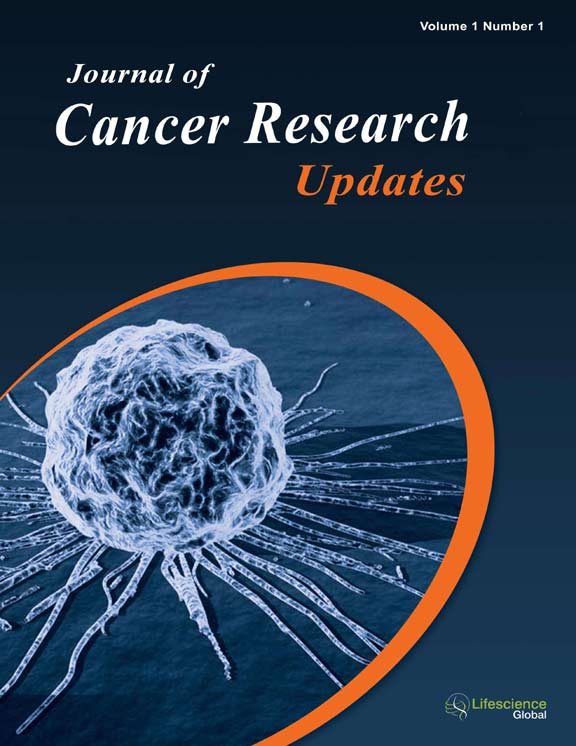jcru
Editor’s Choice : The Reciprocal Interaction of Small Molecule Protein Kinase Inhibitors and ATP-Binding Cassette Transporters in Targeted Cancer Therapy
|
|
Abstract: Protein kinaseshave become the second most important group of drug targets, after G-protein-coupled receptors. Currently,15 small molecule protein kinase inhibitors (PKIs) have received food and drug administrator (FDA) approval to be used as cancer treatments. However, in the course of clinical use of these small molecule PKIs, drug resistance has become a recurring problem. Their therapeutic potential depends on access to their intracellular targets, which significantly affected by certain membrane ATP-binding cassette(ABC) transporters. ABC transporters were major causesof clinical multiple drug resistance (MDR) and might be resulting in the development of resistance to PKIs in cancer patients. Some PKIs could modulate the activity of ABC transporters and affect the metabolism of themselves and other chemically unrelated drugs. Moreover, it has been recently reported that some PKIs could regulate the expression of ABC transporters in tumor cells, thereby affect their intracellular accumulation and antitumor efficacy. In this review,the reciprocal interaction of clinically important PKIs with the MDR-related ABC transporters, in particular ABCB1 and ABCG2,wassummarized. Keywords: Protein Kinase Inhibitors, ABC Transporters, P-gp/ABCB1, BCRP/ABCG2, Targeted Cancer Therapy.Download Full Article |
Editor’s Choice Potential Solutions in Radiation Hormesis
|
|
Abstract: This study summarizes up-to-date information about the biopositive effects of low radiation treatment (LRT), radiation hormesis, and our experimental devices. In addition, we present a favorable treatment result in a patient with advanced rectal carcinoma who received LRT at home using a radon gas aspirator. The patient was a 61-year-old man who underwent proctectomy in 2010. During the additional first-line chemotherapy, apparent increases in tumor makers identified multiple remote metastases in the lung, sacrum and liver. Sacrum pain limited his activity of daily living and impeded his coming to our facility for LRT. Then, we decided to provide him home LRT using a radon gas aspirator. He inhaled radon gas for 15 minutes at least 3 times a day at home, resulting in remarkably reduced tumor markers and sacrum pain relief. He could walk, keep sitting up without support and sleep in the spine position again after receiving home LRT. No influence of radon gas inhalation on the second-line chemotherapy was observed. The favorable effects of LRT lead us to believe that the newly-developed devices will provide the clinical significance on malignant diseases. To establish the LRT regimen, further clinical investigation and data accumulation are thus called for. Keywords: Alternative treatment, low radiation treatment, radon gas, malignant diseases.Download Full Article |
Editor’s Choice : The Many Aspects of Off-Label Prescribing in Oncology
|
|
Abstract: Off-label prescribing is particularly common in oncology. While it brings abundant benefits to cancer treatment, decisions on off-label prescribing should be made with caution, due to insufficient supporting data, weak safety monitoring system, and increased health care burden. Currently, reimbursement decisions for off-label oncology are based on recommendations from four drug compendia, each of which combines data from clinical trials and/or observational studies and expert opinions. Further enhancements are expected in terms of transparency and consistency of compendia’s methods of data synthesis. While the existing FDA regulations prohibit direct-to-prescriber promotion, with the exception of publication on off-label drug use, considerable leeway may be given to late-stage cancer patients. Clinical Trials for oncology off-label indication should focus on late stage cancer patients beyond first-line therapy and patient sample should have equal representations from academic and community settings. Off-label oncology clinical trials should also provide full information on conflict of interest. Given the high stakes involved in oncology treatment, future policies should strike a balance between innovation and clinical, economic, and humanistic consequences. Keywords: Off-label drug use, cancer, health policy, FDA, healthcare reimbursement.Download Full Article |
Editor’s Choice : Dietary Ascorbic Acid-Mediated Augmentation of Antitumor Activity and Protection Against Toxicities Induced by Cis-Diamminedichloroplatinum-(II) in Dalton’s Lymphoma-Bearing Mice
|
|
Abstract: Cis-Diamminedichloroplatinum-(II) (CDDP) commonly known as cisplatin is considered as a major anticancer drug against a broad spectrum of malignancies. This study evaluates the modulatory effect of dietary ascorbic acid (AA) on the therapeutic efficacy of CDDP against murine ascites Dalton’s lymphoma (DL) and some tissue toxicities in tumor-bearing mice. As compared to CDDP alone, the combination treatment with ascorbic acid (AA) plus CDDP showed better therapeutic efficacy against murine ascites Dalton’s lymphoma. DL cells treated with CDDP showed the appearance of apoptotic features involving fragmentation of nucleus into discrete masses and plasma membrane blebbing. As compared to CDDP alone, combination treatment caused an increase in the number of apoptotic DL cells. Reduced glutathione (GSH) level was noted to decrease in DL cells while it increased in kidney after combination treatment. Blood haemoglobin (Hb), red blood cells (RBCs) and white blood cells (eosinophils, basophils and lymphocytes) were also decreased after CDDP treatment while overall betterment in hematological parameters was noted after combination treatment. The analysis of renal function tests (RFT) and liver function tests (LFT) suggest an improvement against CDDP-induced liver and kidney toxicities after combination treatment. The decrease in GSH levels particularly in DL cells and an increase in kidney and liver after combination treatment may have a role in the antitumor activity and decrease in CDDP-induced toxicity in the tumor-bearing host. Improvement in the LFT, RFT and hematological toxicities after combination treatment may have a beneficial effect in the improved survival of tumor-bearing mice. Keywords: Ascorbic acid, Apoptosis, cis-Diamminedichloroplatinum-(II), Dalton’s lymphoma, Reduced glutathione, Hematotoxicity.Download Full Article |






















